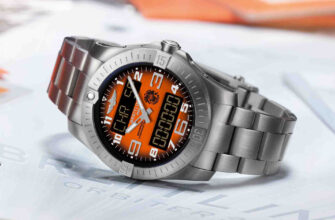Talking about watches, we constantly use the terms "mechanical" and "quartz". A person who, as they say, is in the subject does not need an explanation of these terms. But among our readers there are probably people who have just become interested in the watch. Let's try to explain and understand for them. And let's start with the quartz watches that are widespread today.
Home
For a clear understanding, let's remember - what is the most important thing in a car? Probably everyone knows this: the main thing is the motor! Plus, of course, the fuel that the engine feeds on. And plus the transmission, which the motor drives, and it converts this movement into rotation of the wheels. In the clock, everything is basically the same! And in quartz crystals too: a battery plays the role of fuel (as a rule, of the "pill" type), the role of a motor is a quartz crystal, the role of a transmission is a stepper motor, which directly makes the arrows move.
So, the battery supplies a constant current to the quartz crystal. Back in the 80s, Pierre Curie discovered the piezoelectric effect: when a crystal is deformed, electricity is generated. And vice versa: when a crystal is exposed to electricity, it deforms and vibrates. Moreover, it does this with a strictly defined frequency, the so-called natural frequency.
When making crystals quartz (yes, the industry uses artificially grown, synthesized quartz) they are tuned to one or another frequency. It is very stable and many orders of magnitude higher than the vibration frequency of purely mechanical systems. In the vast majority of modern quartz watches, it is 32768 hertz! Recall that, for example, the frequency of alternating current in household electrical networks is only 50 hertz ...
Why is this, at first glance, a strange number - 32768? It turns out for a simple reason: it is a 15 to the 14th power. Well, the degree could have been different - 16th, 15th, etc., this is not so important. It is the two that is essential, because our "transmission" - the stepper motor, comes into play. Before transferring the movement to the clock hands, he, dividing the initial frequency by two, again by two, and so XNUMX times, lowers it to one hertz, as a result of which the second hand "jumps" exactly once a second.
That, in fact, is all of our "main".

Why a quartz watch is good
First of all, they are good at a) stroke accuracy and b) autonomy. The ultra-high frequency of the "motor" also gives the highest accuracy - only a few seconds a month, and this is even the worst case: the most advanced quartz models deviate from the absolute ideal for a few seconds a year. So, for example, the 9F movement of the Japanese concern Seiko runs with an accuracy of ± 5 seconds per year! As for the autonomy, everything is clear here: the battery lasts for several years, there is no need for daily exercises with the crown.
Additional bonuses
The advantages of quartz watches are far from limited to the above. Firstly, extremely tiny and very smart electronics are able to equip such a watch with a very wide range of functions. Precisely showing the current time is a base, and all sorts of things are added to it: additional time zones, alarms, chronographs (for measuring individual time intervals), calendars, astronomical functions (moon phases, sunrise / sunset times, zodiac signs, etc.) , sports functions (pedometer, heart rate monitor, calorie meter, etc.), GPS module ... so much more!
Secondly, many models of quartz watches do not have a purely arrow indication, but a purely digital (in this case, we have not a dial, but an LED display) or mixed (it is called "ana-digi", from the words analog and digital). Countless people who love it!
Next, once again about autonomy. A battery-"pill" is, of course, good, but even better is a solar battery: there is no need to take care of the supply of "fuel" for your "motor". We just don't put the clock in a "dungeon", that's all.
And finally, once again about accuracy. Advanced models of modern quartz watches are often equipped, simply speaking, with a radio receiver tuned to the frequencies of signals from a network of special radio towers, and a module for correcting readings for these signals. The radio towers operate according to an atomic clock, which is almost absolutely accurate; accordingly, a quartz watch on the wrist becomes the same.

And against
All of the above is “for” quartz watches. But is there anything "against"? It turns out, yes, there is. We will not talk for a long time about such purely technical details as the gradual aging of the quartz crystal and the frequency drift caused by it from the given one (this is a rather long process) and about some influence of the air temperature on the same frequency (the so-called temperature-compensated quartz was invented and mastered long ago in production) ... No, let's talk about something else, purely subjective. And here we have to give a little history.
The first quartz clock, built in the Bell laboratory (USA) in 1932, was stationary, huge (took up an entire room) and was reference accurate - 0,02 sec. per day. In the late 1950s and early 1960s, wristwatches that used electronics saw the light: in the famous Bulova Accutron model, transistors invented not long before were used (this made it possible to radically reduce the number of mechanism parts); the vibration frequency was set by a mechanical tuning fork (360 hertz). It remained only to replace it with a quartz crystal, and they learned how to synthesize these crystals just in the same years.
However, it is easy to say, but in reality the path to the first wrist quartz watch took a whole decade. They were the first to be the Seiko 1969SQ Quartz Astron, released on sale in December 35. New models soon followed, both Japanese and Swiss. In May 1970, the American (now Swiss) company Hamilton introduced the world to the world's first quartz watch with a digital display.
All of the aforementioned virtues of quartz watches, plus excellent suitability for mass production - and therefore low prices - meant, it seemed, the death of traditional watch mechanics.
But it was here that the same "against" came into force. Experts, experts, lovers of micromechanics considered quartz to be soulless! After all, the clockwork, with its dozens or even hundreds of parts, skillfully combined into a single "orchestra" and, moreover, delicately processed (often by hand), is indeed a work of art!
Be that as it may, the mechanics survived. The period, called the "quartz crisis", lasted about 10 years, after which both watch directions coexist quite peacefully. You don't care about watchmaking, you only need utilitarian virtues - well, wear quartz. Otherwise, give preference to mechanics that are more prestigious (and, naturally, more expensive).
And a few more words about art
The idea of the spiritlessness of quartz watches seems to us somewhat schematic. Many, many great (and extremely expensive) jewelry watches are powered by quartz. And designers also have a place to apply their imagination. However, this is more likely not a watch, but an accessory, decoration.
And an example of true spirituality manifested in the field of quartz watches can rightfully be called the history of the creation of the world's first "indestructible" watch Casio G-SHOCK. The main role here belongs to the engineer Kikuo Ibe, who, with a tiny group of employees and with the blessing of the then head of the company Katsuo Kasio, found (not without drama) a fantastically beautiful solution to the shockproof problem by hanging an electronic (quartz) module inside the watch case on elastic elements (springs) ... That was in 1983, and now the Casio G-SHOCK family of quartz watches numbers hundreds or even thousands of different models, for every taste.
Well, and about the main and not the most important, but also interesting, in relation to mechanical watches, about their pros and cons, we also plan to tell. Follow our blog!









